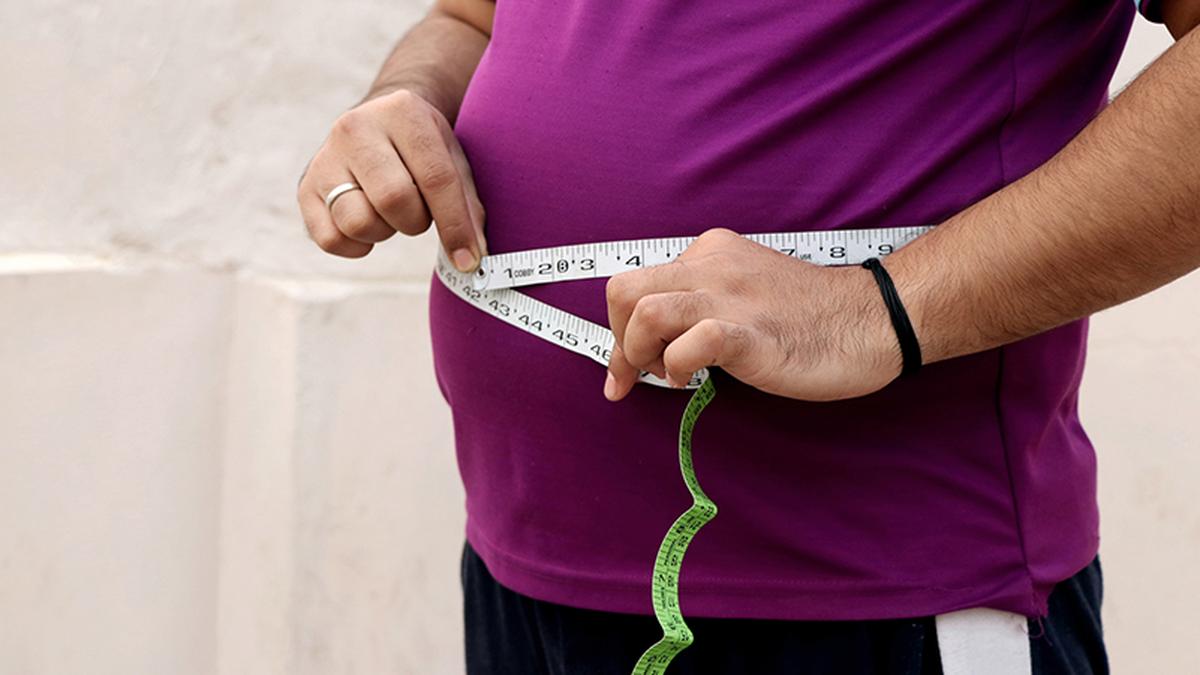How has India revised obesity parameters? Premium

How has India revised obesity parameters? Premium
The story so far:
India has revised guidelines for obesity treatment and diagnosis after 15 years. The move comes after a call for global recalibration on how obesity is measured. In a recent report published in The Lancet Diabetes and Endocrinology, the global commission noted that Body Mass Index (BMI) apart, the distribution of body fat is also a key indicator of overall health and disease patterns. In step with this report, experts in India, including a group of doctors, nutritionists, and others from the National Diabetes Obesity and Cholesterol Foundation, Fortis C-DOC Hospital, and the All-India Institute of Medical Sciences (AIIMS), have issued updated guidelines for India.
Also Read | At the soft core of a non communicable diseases epidemic, is obesity
The proposed recommendations, endorsed by more than 75 medical organisations around the world, are designed to address limitations in the traditional definition and diagnosis of obesity that hinder clinical practice and healthcare policies, resulting in individuals with obesity not receiving the care they need.
The revised classification system introduces two stages in obesity — ‘innocuous obesity’, characterised by increased body fat without organ or metabolic dysfunction; the second stage is obesity with consequences, marked by the impact on physical functions and presence of obesity-related diseases. This framework places special emphasis on abdominal fat distribution, which has particularly adverse effects on Asian Indian populations.
“An important development occurred in 2009 when India introduced revised obesity definitions specifically for Asian Indians. This revision acknowledged that Asian Indians typically have higher body fat percentages than Western populations and develop diabetes at lower BMI levels,’’ said Anoop Misra, co-author of the paper.
The new guidelines set lower thresholds for BMI criteria which are now adjusted downward, with overweight defined as ≥23-24.9 kg/m² and obesity as ≥25 kg/m², compared to the Western standards of ≥25 kg/m² and ≥30 kg/m² respectively. Also, ideal waistlines have to be >90 cm for men and >80 cm for women, lower than Western standards of 102 cm and 88 cm respectively.
These guidelines influenced obesity management for South Asians in other countries, including the U.K. and the U.S., and, sparked numerous research studies that deepened the understanding of obesity in Asian Indian populations.
Studies show that excess fat in Indian populations leads to higher levels of inflammation and metabolic disturbance at lower BMI thresholds compared to Western populations. The only available antidote is to start exercising and have a diet plan early in life.
The current report states that using BMI alone to diagnose obesity is not a reliable measure of health or illness at the individual level. This can result in misdiagnosis, with negative consequences for people living with obesity.
A secondary analysis of trends of prevalence, patterns, and predictors from 2005 to 2020 using the National Family Health Survey shows that in the 15-year period, the prevalence of overweight or obese (BMI ≥25 kg/m2) among women and men aged between 15 and 49 years increased from 12.6% to 24% and 9.3% to 22.9% respectively. This indicates that almost one-fourth of the population (both men and women) are currently either overweight or obese in India. The prevalence of obesity (BMI ≥30 kg/m2) also increased by more than twice in both men and women in the last 15 years.
Naval Vikram, Department of Medicine, AIIMS, says studies have shown a strong correlation between abdominal obesity in Indians, resulting in inflammation and the early onset of diseases with co-morbidity. “Abdominal fat, which is closely linked to insulin resistance and prevalent in Asian Indians, is now recognised as a key factor in the diagnosis. The new definition integrates the presence of co-morbidities — such as diabetes and cardiovascular disease — into the diagnostic process, ensuring that obesity-related health risks are better accounted for, and taken care of in management,” he pointed out. An early diagnosis translates into targeted management strategies, Dr. Vikram contended.
“There is also inclusion of mechanical problems associated with obesity, for example, knee and hip osteoarthritis, etc., or shortness of breath during daily activities, which lead to a poor quality of life,’’ he added.
Also Read | If BMI is becoming an inadequate measure for health, is BRI the answer?
Commission chair Francesco Rubino, King’s College London, said, “We now know that some individuals with obesity can maintain normal organs’ function and overall health, even long term, whereas others display signs and symptoms of severe illness here and now.”
He noted that considering obesity only as a risk factor, and never a disease, can unfairly deny access to time-sensitive care among people who are experiencing ill health due to obesity alone.










